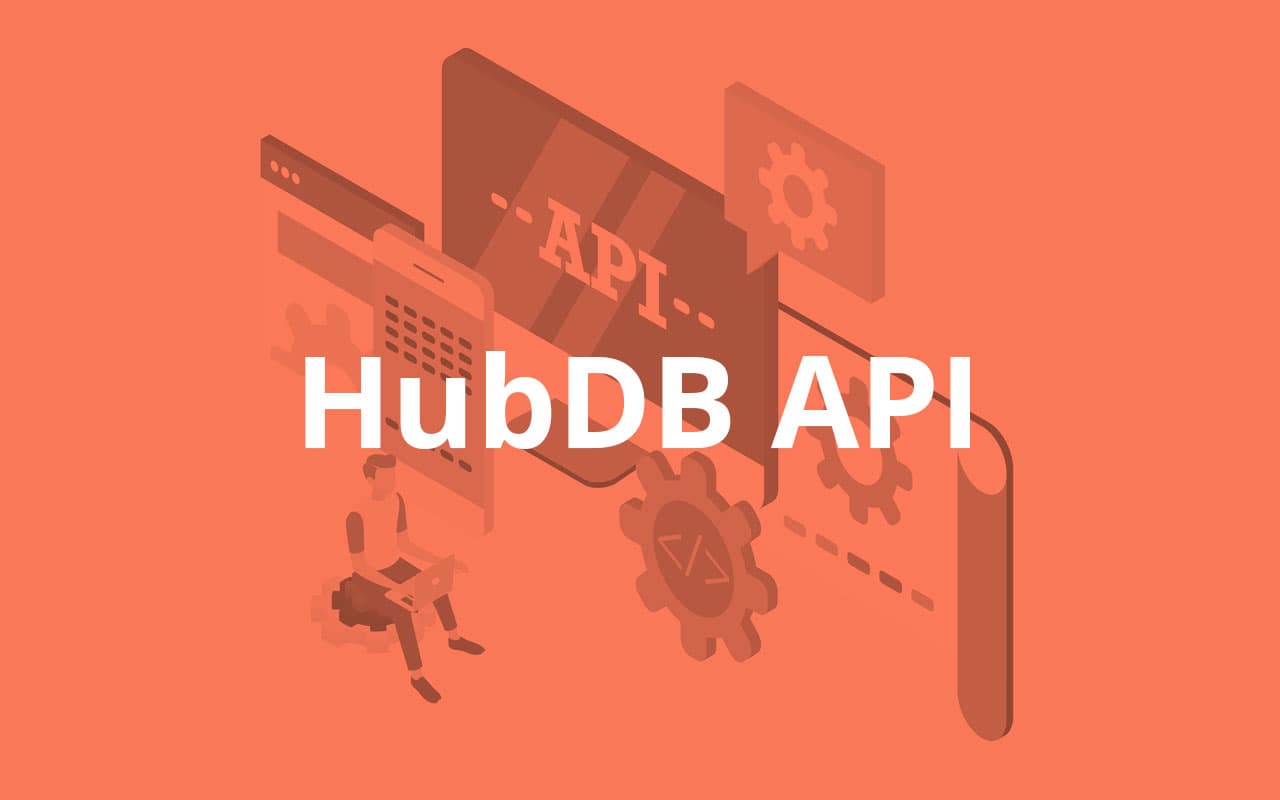
The HubDB API is a specific API provided by HubSpot that allows developers to access and manage data stored in HubSpot's database programmatically. This API allows developers to create, read, update and delete data stored in tables and query and filter data using SQL-like syntax. It is designed to help developers create custom applications, integrations and workflows that work with data stored in HubSpot.
With HubDB, developers can create custom data structures and relationships, which can be used to power various aspects of marketing and sales operations. It allows you to store and manage large amounts of data, making it possible to create complex and dynamic custom applications. For example, you can use HubDB to create custom contact databases, product catalogues, or inventory management systems.
The API is designed with RESTful principles and returns data in JSON format. Authentication is done using API keys, which can be generated from within your HubSpot account. HubSpot provides extensive documentation, code samples and SDKs to help developers get started using the HubDB API. Developers can take advantage of these resources to learn how to use the API and to find examples of how to use it in different contexts.
In summary, HubDB API is a powerful tool that can help developers to create custom applications and integrations that leverage data stored in HubSpot. It provides a flexible and powerful way to manage data and can be used to create custom data structures and relationships to power various aspects of marketing and sales operations.
The Benefits of the HubDB API
There are several benefits to using the HubDB API, including:
1) Flexibility
The HubDB API is very flexible, allowing developers to create custom data structures and relationships to power various aspects of marketing and sales operations. It also allows for complex data analysis and retrieval of specific subsets of data using SQL-like syntax, making it easy to manage and analyze data in a way that is specific to the business needs.
2) Scalability
The HubDB API is highly scalable, allowing businesses to handle large amounts of data and create complex and dynamic custom applications that adapt to changing business needs. It has a pagination feature which allows for easy handling of a large amount of data when querying the database, making it easy to handle large data sets without performance degradation.
3) Automation
The HubDB API allows businesses to automate various business processes and workflows, such as contact management, marketing automation and sales automation, to improve efficiency and effectiveness. It allows for accurate and consistent data management, helping businesses make data-driven decisions and optimize their operations.
4) Integration
The HubDB API allows for integration with other software and systems to create customized workflows; it can be used to build integrations with other systems and services, allowing businesses to streamline their processes and improve efficiency.
5) Data Management
The HubDB API enables developers to create, read, update, and delete data stored in tables and query and filter data using SQL-like syntax, allowing for better data management, organization, and analysis. This will enable businesses to manage and analyze their data in a way that is specific to their industry and operations, making data-driven decisions and automating processes.
6) Reporting and Analytics
The HubDB API allows for retrieving analytics data on various aspects of your HubSpot account, such as contacts, companies, deals, email campaigns and more. This feature enables businesses to make data-driven decisions and optimize their operations by providing insights and metrics to track progress and measure success.
How to Use the HubDB API
To use the HubDB API, you must have a HubSpot account and generate an API key. Once you have an API key, you can start requesting the API using a programming language, such as Python, Java or JavaScript.
Here is an overview of the general steps to use HubDB API:
- Register and log in to your HubSpot account and generate an API key.
- Review the API documentation to understand the available endpoints and how to format your requests.
- Use a programming language and library of your choice to make HTTP requests to the API.
- Use the endpoints provided by the API to perform various actions such as creating tables, inserting data, updating data and retrieving data.
- Use the data retrieved from the API to create custom applications, integrations, and workflows that work with data stored in HubSpot.
- Test your implementation by sending requests to the API and checking the results.
- Once satisfied with your implementation, you can deploy your application or integration to a production environment.
It's also worth noting that HubSpot provides SDKs for several programming languages, such as Java, .NET, PHP, Python and Ruby; these SDKs simplify the process of working with the API by providing an abstraction layer on top.
Summary
The HubDB API is a powerful tool that allows developers to access and manage data stored in HubSpot's database. It allows to create, read, update, and delete data stored in tables, as well as query and filter data using SQL-like syntax. It is designed to help developers create custom applications, integrations, and workflows that work with data stored in HubSpot. Some of the key features of the API are flexibility, scalability, automation, integration, data management, and reporting and analytics. The API uses RESTful principles, returns data in JSON format, and authentication is done using API keys. HubSpot provides extensive documentation, code samples, and SDKs to help developers get started with the API.